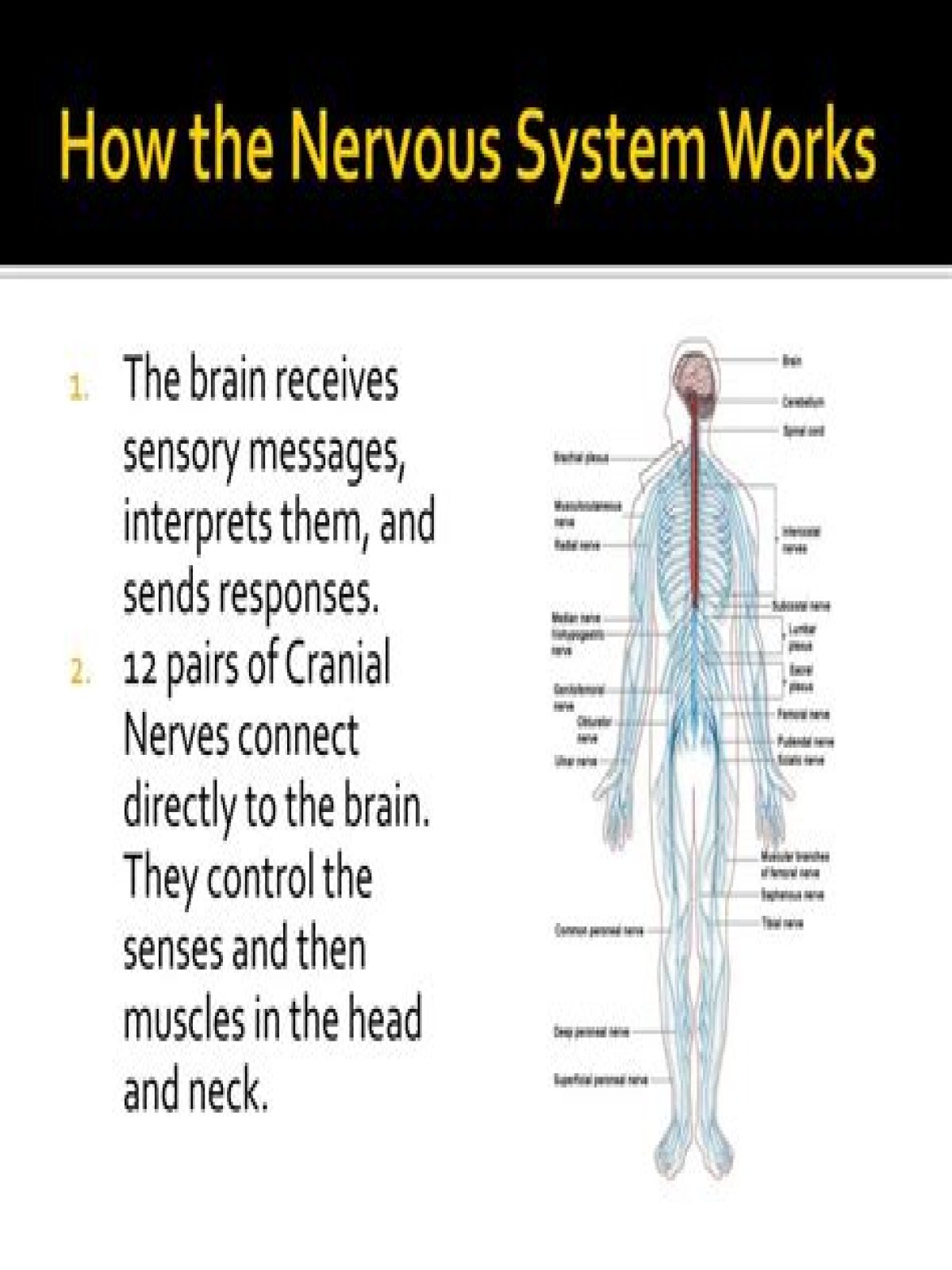How does the nervous system work with skeletal system?
- How does the nervous system work with skeletal system?
- How does the nervous system work with the other systems?
- How does the skeletal system work with the integumentary system?
- How does the central nervous system and peripheral system work together?
- Which statement best describes the relationship between the central nervous system and the peripheral nervous system?
How does the nervous system work with skeletal system?
Your nervous system (brain and nerves) sends a message to activate your skeletal (voluntary) muscles. Your muscle fibers contract (tense up) in response to the message. When the muscle activates or bunches up, it pulls on the tendon. Tendons attach muscles to bones.
How does the nervous system work with the other systems?
Your nervous system interacts with every other system in your body. Your endocrine system works closely with your brain and central nervous system to control the creation of specific hormones and enzymes. Your digestive and excretory systems work with the nervous system in both conscious and unconscious ways.
What system works with the nervous and skeletal system to move the body?
The locomotor system is also known as the musculoskeletal system. It is made up of the skeleton, skeletal muscles, ligaments, tendons, joints, cartilage and other connective tissue. These parts work together to allow your body to move.
How does the skeletal system react with other systems?
Your skeletal system is made up of cartilage and calcified bone that work together. They help the process of movement happen in a smoother manner. The calcified bones of your skeleton also work with the circulatory system. Marrow inside of your bones helps produce the cells inside of you blood.
How does the skeletal system work with other systems to maintain homeostasis?
The skeletal system helps maintain mineral homeostasis by regulating the level of calcium and other minerals in the blood by storing or releasing them from bones as needed. This process also helps maintain homeostasis in blood pH because the minerals are basic.
How does the skeletal system work with the integumentary system?
What other systems do the Integumentary and Skeletal system work with? The Skeletal System consists mainly of bones. The Integumentary system works with the muscular system to protect the muscles. They produce heat,and increases blood flow to the skin.
How does the central nervous system and peripheral system work together?
These nerves extend from the central nervous system to the outermost areas of the body. The peripheral system allows the brain and spinal cord to receive and send information to other areas of the body, which allows us to react to stimuli in our environment.
How do the nervous system and endocrine system work together to maintain homeostasis?
The portion of the brain that maintains the body’s internal balance (homeostasis). The hypothalamus is the link between the endocrine and nervous systems. The hypothalamus produces releasing and inhibiting hormones, which stop and start the production of other hormones throughout the body.
How does the nervous system work to maintain homeostasis?
When a body system leaves a set point and falls outside its normal range, signals are sent through the nervous system which trigger responses to bring the system back into the normal range of functioning. This ability to perceive the environment and reacting to it is critical to maintaining homeostasis in the body.
What other systems does the integumentary system interact with?
The integumentary system works with all other bodily systems—such as the nervous, cardiovascular, and digestive systems—to accomplish all the jobs it performs in helping to maintain the stability of the internal body.
Which statement best describes the relationship between the central nervous system and the peripheral nervous system?
Which statement best describes the relationship between the central nervous system and the peripheral nervous system? The central nervous system is the command center; the peripheral nervous system carries out the commands.
